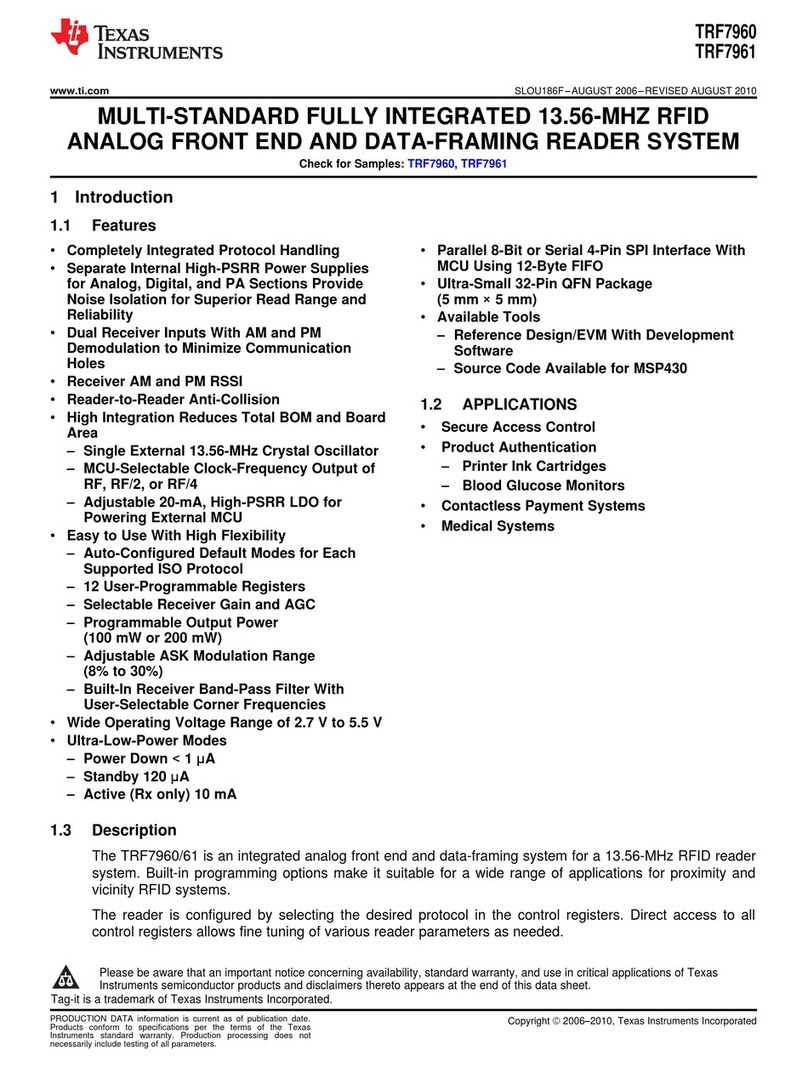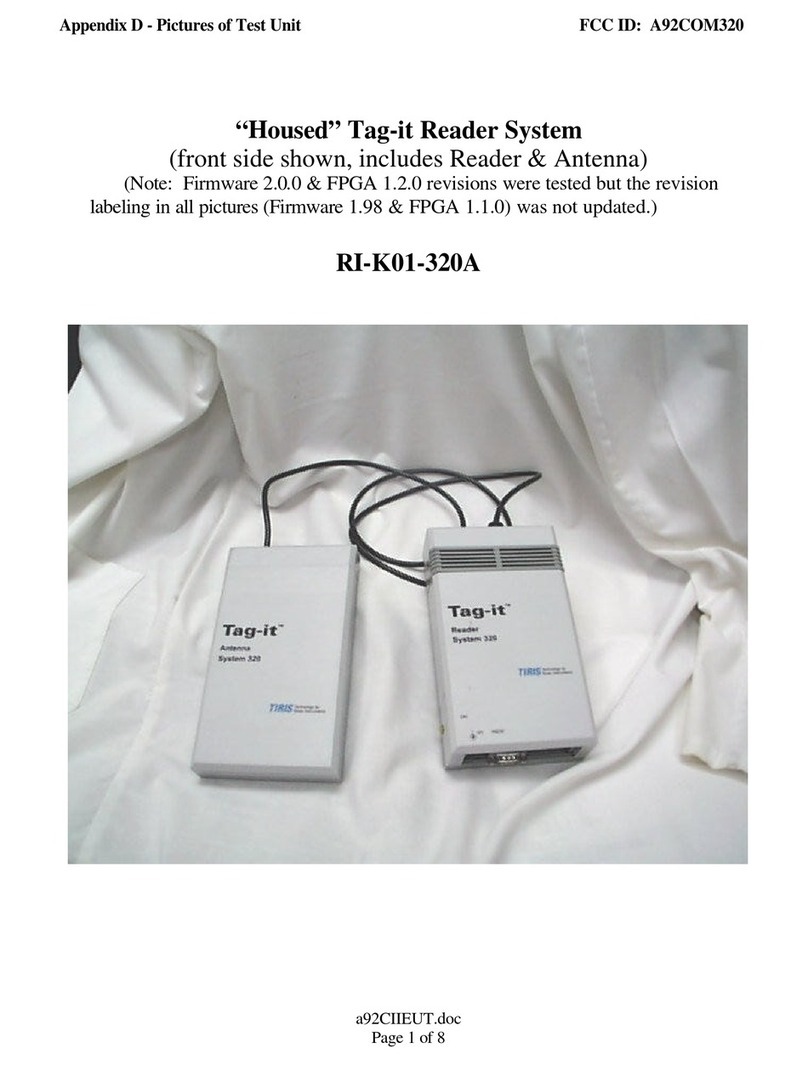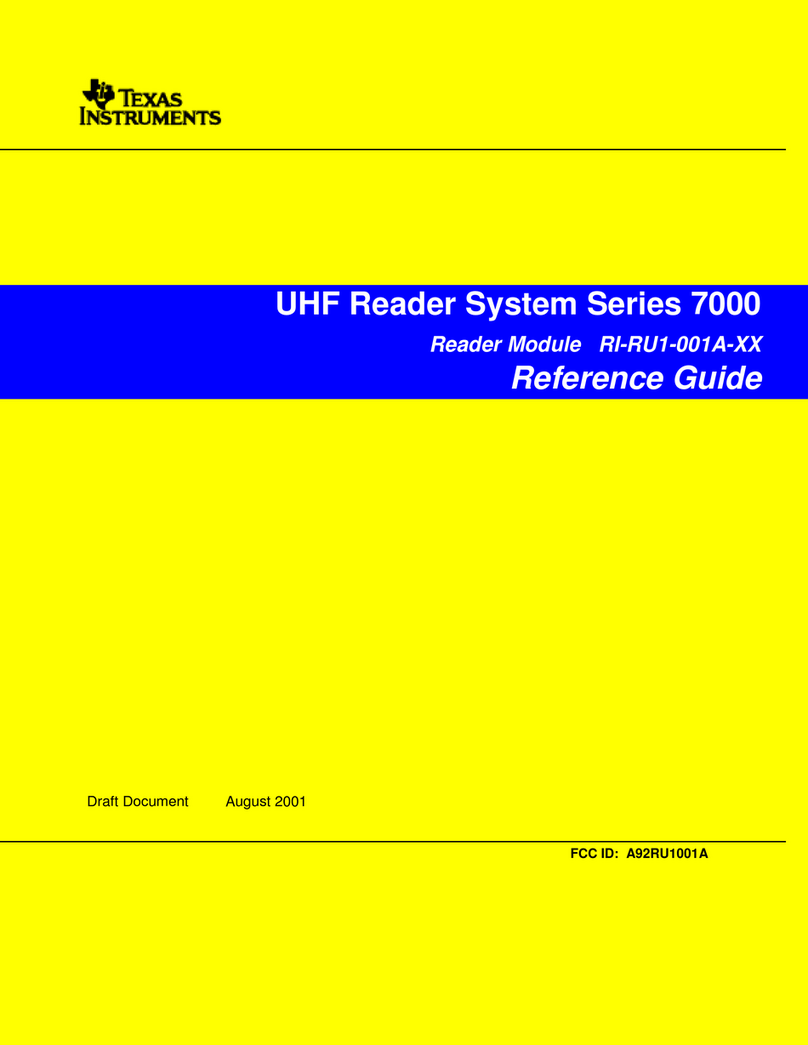
7
May ’00 Chapter 1. Introduction
1.3 Data Handling
1.3.1 Data Check A data check is always performed on the data signal received from the transponder.
Three different reading status are possible when attempting to read a transponder:
- Identification correctly received
- Invalid Identification
- No Identification detected (no read)
After addressing MPTs, however, the TIRIS reader sends out different protocols as
described in sections 3.1 and 3.2.
In all cases the following is true:
If the identification number is correct, the green O.K. LED is activated.
If a transponder protocol could not be detected, or only a start byte could be de-
tected the green O.K. LED will not be activated.
In LINE or EXECUTE mode the ASCII character ' I ' will be sent to the PC if at
least the start byte of a transponder protocol could be detected.
Examples:
1.3.2 Data Buffer In NORMAL mode (see 2.4.8 and 2.5.3), a correctly received identification number
is transmitted via the serial interface only if it is different to the previously received
transponder identification. The comparison includes the transponder type (RO, R/W
or MPT), read page (if an MPT was read) and the identification number.
For this purpose the last transponder information received is stored in an identifica-
tion data buffer, located in the microcomputer RAM, and each correctly received in-
formation together with its transponder type (RO, R/W and MPT (if in Multipage
Transponder mode)) are compared to the content of this buffer. The buffer is cleared
by a microcomputer reset or by the PC command CLEAR (2.3.3).
Serial Protocol Comment
LW 0000 0000000023450607<CR><LF> TIRIS reader in LINE mode read correct
R/W ID
L10M 05 1234 1234123434567653<CR><LF> MPT detected in LINE mode
XR 0000 5674895692567054<CR><LF> TIRIS reader in EXECUTE read correct
RO ID
LI<CR><LF> Reader in LINE mode (invalid ID)
XI<CR><LF> Reader in EXECUTE mode (invalid ID)
L<CR><LF> Reader in LINE mode (no read)
X<CR><LF> Reader in EXECUTE mode (no read)
Note:
In a noisy environment, it could occur that the invalid ID character is
generated, even when there is no transponder within the reading
area.






























